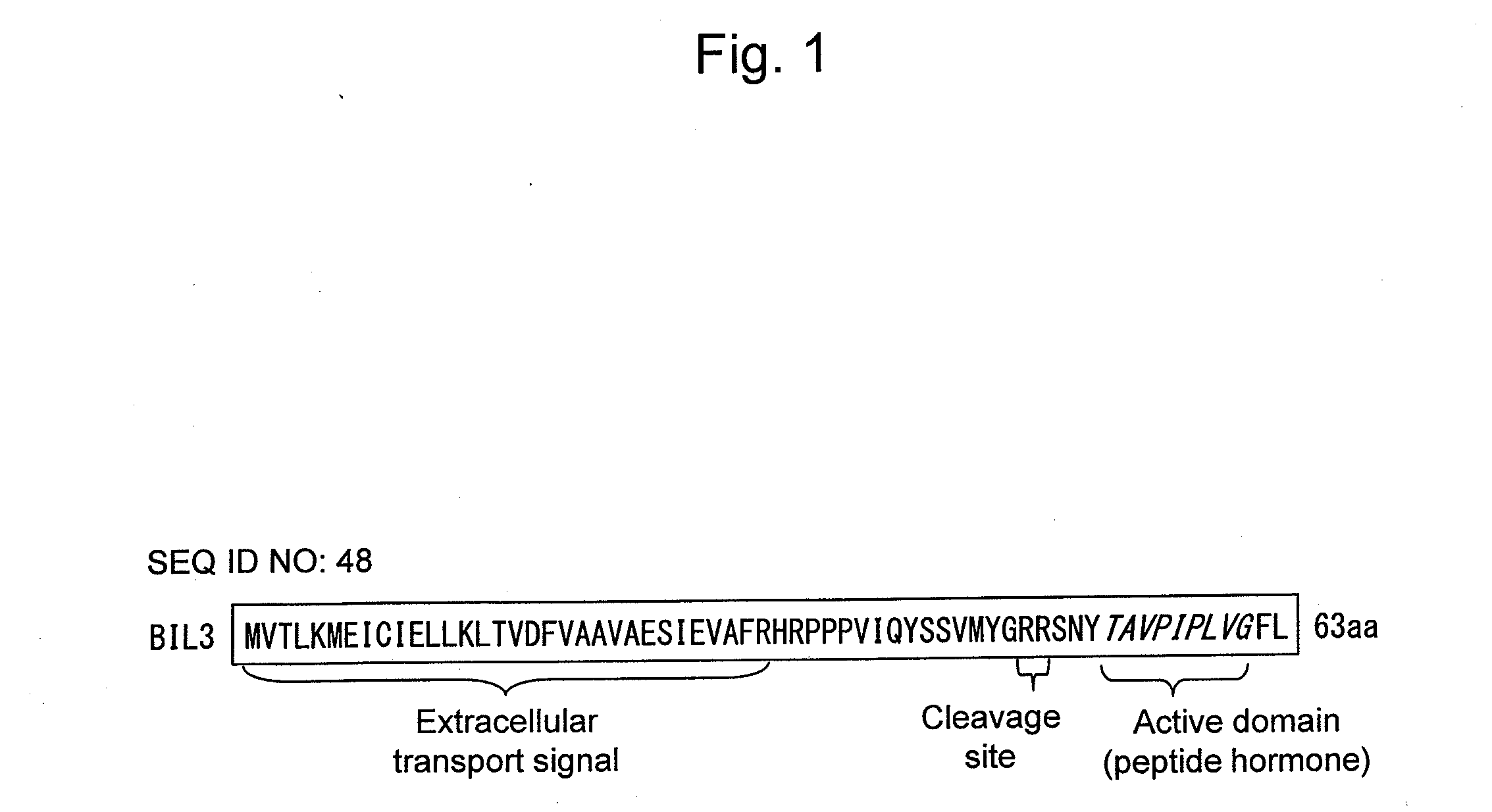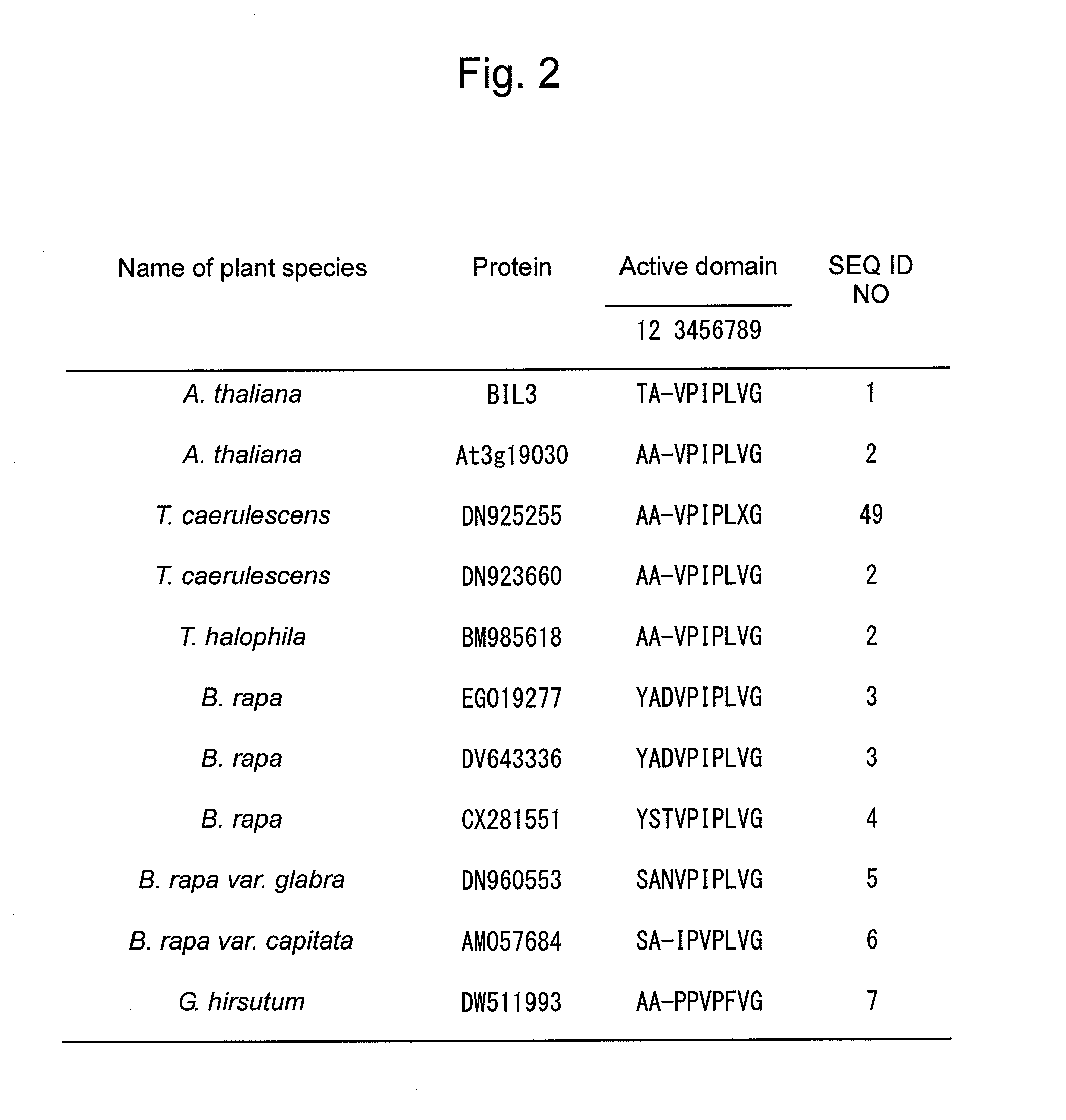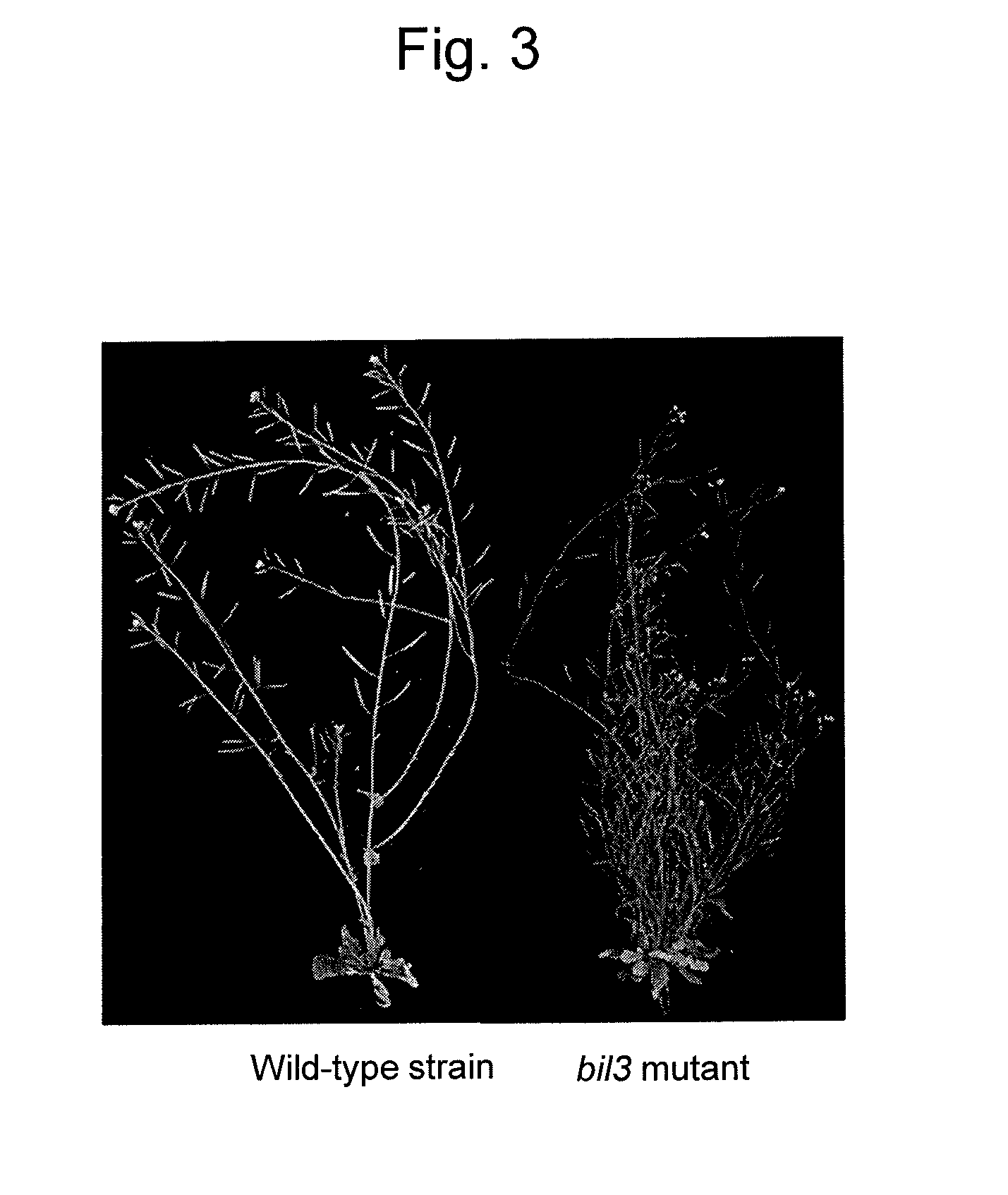Composition that augments plant disease resistance and/or branching
- Summary
- Abstract
- Description
- Claims
- Application Information
AI Technical Summary
Benefits of technology
Problems solved by technology
Method used
Image
Examples
example 1
Phenotyping of Bil3 Mutant
[0172]A semidominant bil3 mutant selected from activation tagging lines (Nakazawa M. et al., (2003) Plant J., 34: 741-750) because of its phenotype as Brz resistance and hypocotyl elongation in the dark place was observed and functionally analyzed.
[0173](Method)
[0174]A plurality of seeds of the wild-type strain or bil3 mutant of Arabidopsis thaliana were inoculated over a ½ MS agar medium (½× Murashige & Skoog Medium Including Vitamins (Duchefa Biochemie B.V.) / 1.5% Sucrose, pH 5.6), then placed in a dark box, and left standing at 4° C. for 2 days or longer. Then, the seeds were continuously irradiated with 100 μmoL / m2s white light at 22° C. for 4 hours and grown in the dark place again at 22° C. for 7 days. After light irradiation again for 2 days in the bright place, the seedlings were transplanted to soil. Six seedlings per pot were transplanted so that their hypocotyls and roots were completely buried under the ground. The soil used was 1 bag of horticul...
example 2
Expression Level Analysis of BIL3 Gene in Bil3 Mutant
[0177]Since the bil3 mutant is a semidominant mutant, the phenotypes of the bil3 mutant confirmed in Example 1 were presumably due to the overexpression of the BIL3 gene resulting from tag insertion. Thus, the expression level of the BIL3 gene in the bil3 mutant was analyzed by real-time PCR.
[0178](Method)
[0179]Total RNA was extracted from each of the bil3 mutant and the wild-type strain using RNeasy Plant Mini Kit (Qiagen N.V.). First, less than 0.1 mg (fresh weight) of rosette leaves was collected from each plant, then frozen in liquid nitrogen, and then disrupted using a mortar. To the disrupted sample, 450 μL, of a β-mercaptoethanol (10 μL / buffer RLT (1 μL) mixed solution was added, and the mixture was vortexed. Specific procedures therefor followed the protocol included in the kit. Finally, total RNA obtained by ethanol precipitation was dissolved in 50 μL of RNase-free water.
[0180]Subsequently, cDNA was synthesized from the ...
example 3
Preparation of BIL3-Overexpressing Transgenic Plant and Phenotyping Thereof
[0183]The results of Example 2 suggested that the phenotypes of the bil3 mutant were induced by the overexpression of the BIL3 gene. Thus, in order to verify this, transgenic Arabidopsis thaliana overexpressing the BIL3 gene linked downstream of 35S CaMV promoter was prepared and phenotyped.
[0184](Method)
[0185](1) Cloning of Wild-Type BIL3 Gene
[0186]First, total RNA extraction and cDNA synthesis for cDNA library preparation were performed according to the method of Example 2.
[0187]Next, in order to obtain the full-length ORF of the BIL3 gene, PCR reaction was performed using the prepared cDNA library and KOD-plus-DNA polymerase (Toyobo Co., Ltd.). The BIL3 primers used were primers bil3-GW-F (SEQ ID NO: 44) and bil3-GW-R (SEQ ID NO: 45) designed for the 5′ terminus and 3′ terminus of the BIL3 gene, respectively. The BIL3 gene was cloned using pENTR / D TOPO cloning kit (Invitrogen Corp.). Specific procedures th...
PUM
| Property | Measurement | Unit |
|---|---|---|
| Electrical resistance | aaaaa | aaaaa |
Abstract
Description
Claims
Application Information
 Login to View More
Login to View More - R&D
- Intellectual Property
- Life Sciences
- Materials
- Tech Scout
- Unparalleled Data Quality
- Higher Quality Content
- 60% Fewer Hallucinations
Browse by: Latest US Patents, China's latest patents, Technical Efficacy Thesaurus, Application Domain, Technology Topic, Popular Technical Reports.
© 2025 PatSnap. All rights reserved.Legal|Privacy policy|Modern Slavery Act Transparency Statement|Sitemap|About US| Contact US: help@patsnap.com



